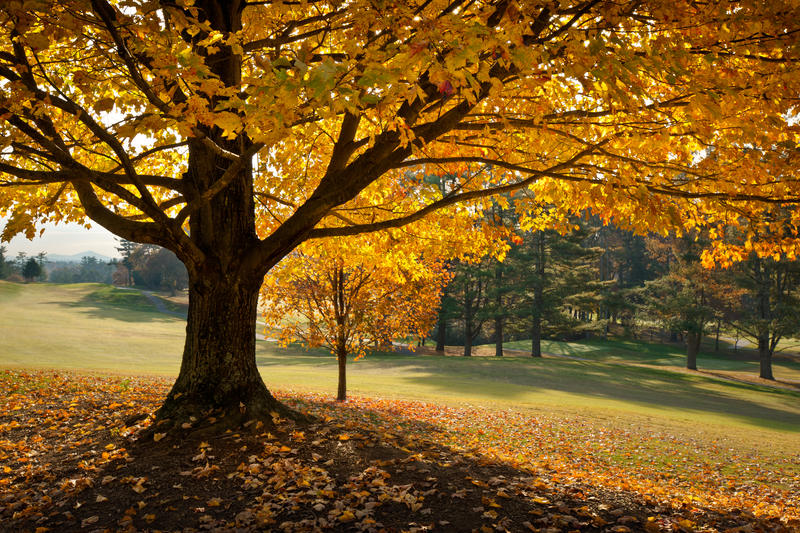At first, it takes some trial and error as well as pre-winter planning to find exactly which non-maples have sweeter syrup. This doesn't mean that you need to go around to every tree in your yard and attempt to extract syrup. Instead, you can use the below guidance to determine which non-maple trees are more likely to produce syrup. For example, it might turn out that your birch tree may have sweeter syrup than a red maple since trees vary based on location.
How to Tell the Difference
The best way to know whether a maple tree is a sugar maple or a red maple or some other species of maple is often by the shape of their leaves or the color of their flowers. If you can tell by the leaves which kind of tree you have, using Internet photos or a field guide, do that.
Otherwise, try examining the bark. Mature red maples and silver maples tend to have a scalier texture than sugar maples, and do not have the light-colored splotches that sugar maples sometimes can.
The best way for small homestead syruping operations to ensure they are using sugar maples for spring tapping is to identify them ahead of time. The flowers and fruit — often called “spinners” or “wings” — are distinctive among maple species, as well as the leaves. Anyone considering tapping trees would do well to do their research in advance and mark the trees, using colored survey tape or marker flags, or even a hand-drawn map if there are enough trees.
Distinguishing Maples From Other Deciduous Trees
As with differentiating between species of maples, telling one genus of deciduous tree — often called hardwoods — from another can be challenging, as well, and for most of the same reasons. However, there is generally a more easily discernable difference between the bark textures and colors, sizes and basic growing habits between one tree genus and another.
Using the process of elimination can help. Paper birches are easy to discern by their bark. Other birch species and many ash trees hang onto their leaves long into the winter and sometimes even until the spring buds start pushing, so it is very likely that they would still have a leaf or two attached to the tree or on top of the snow beneath it. American beech trees often have a beech bark disease that makes their trunks covered with distinctive cankers.
Red maples and silver maples are more likely to be found in swampy areas than are sugar maples.
Have you been able to extract syrup from non-maple trees? Let us know if you have advice for identifying the right trees!
Article Source: Off The Grid News

The article doesn’t really tell you what trees are suitable. It also mentions red maples. Isn’t the sap from red maples poison? I thought it contained cyanide. I know the leaves do. Most plants with red leaves are poisonous.
I have been thinking of tapping my black walnut.
Be prepared to boil a lot of sap. Sugar Maple is the main variety used because it has the highest sugar content. Other maple varieties average 90:1 more or less. 90 gallons of sap boiled and evaporated makes 1 gal syrup.
Oak sap. Wow…lots of tannins there!
There’s a company in Haines, Alaska that sells birch syrup… http://www.birchboy.com
Silentium Gedin’la